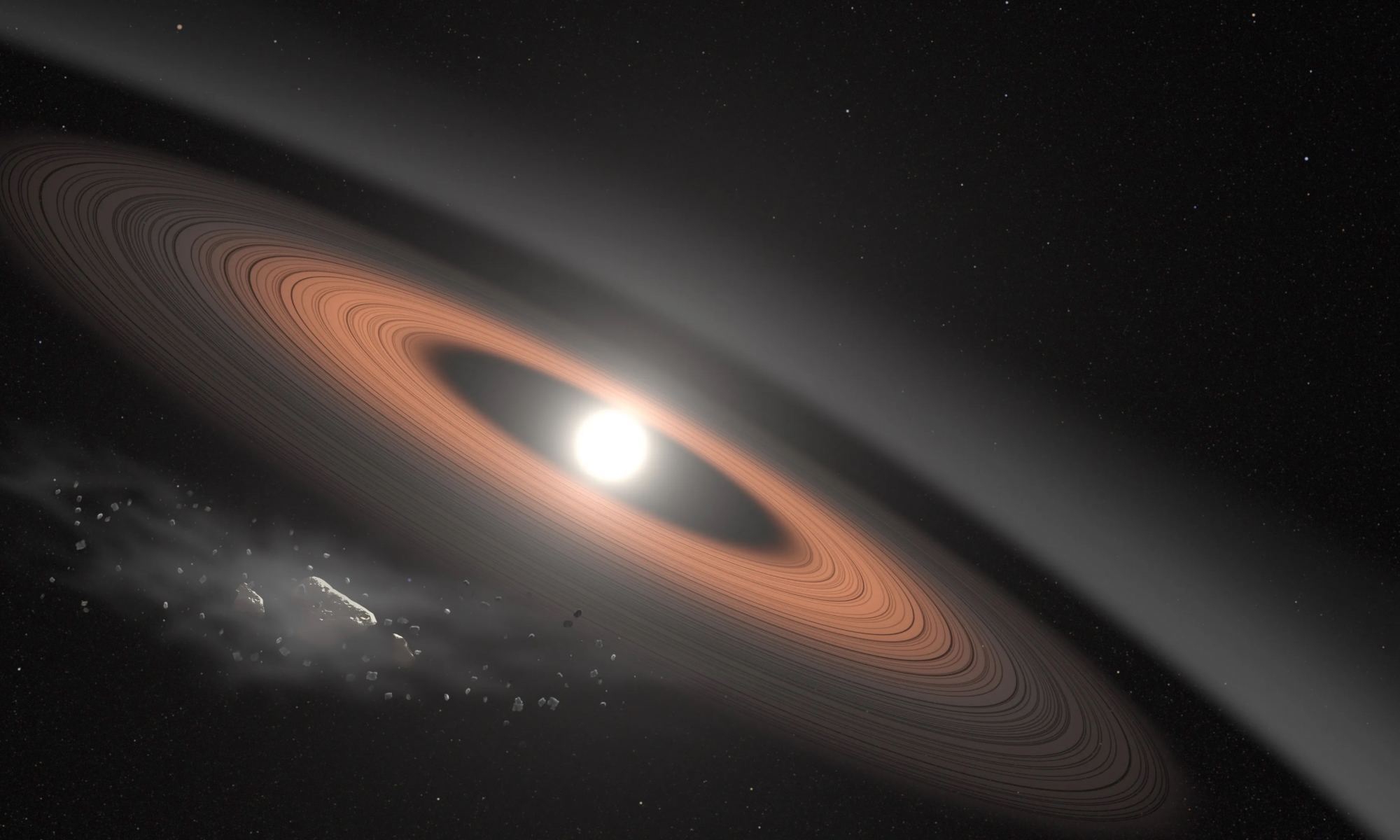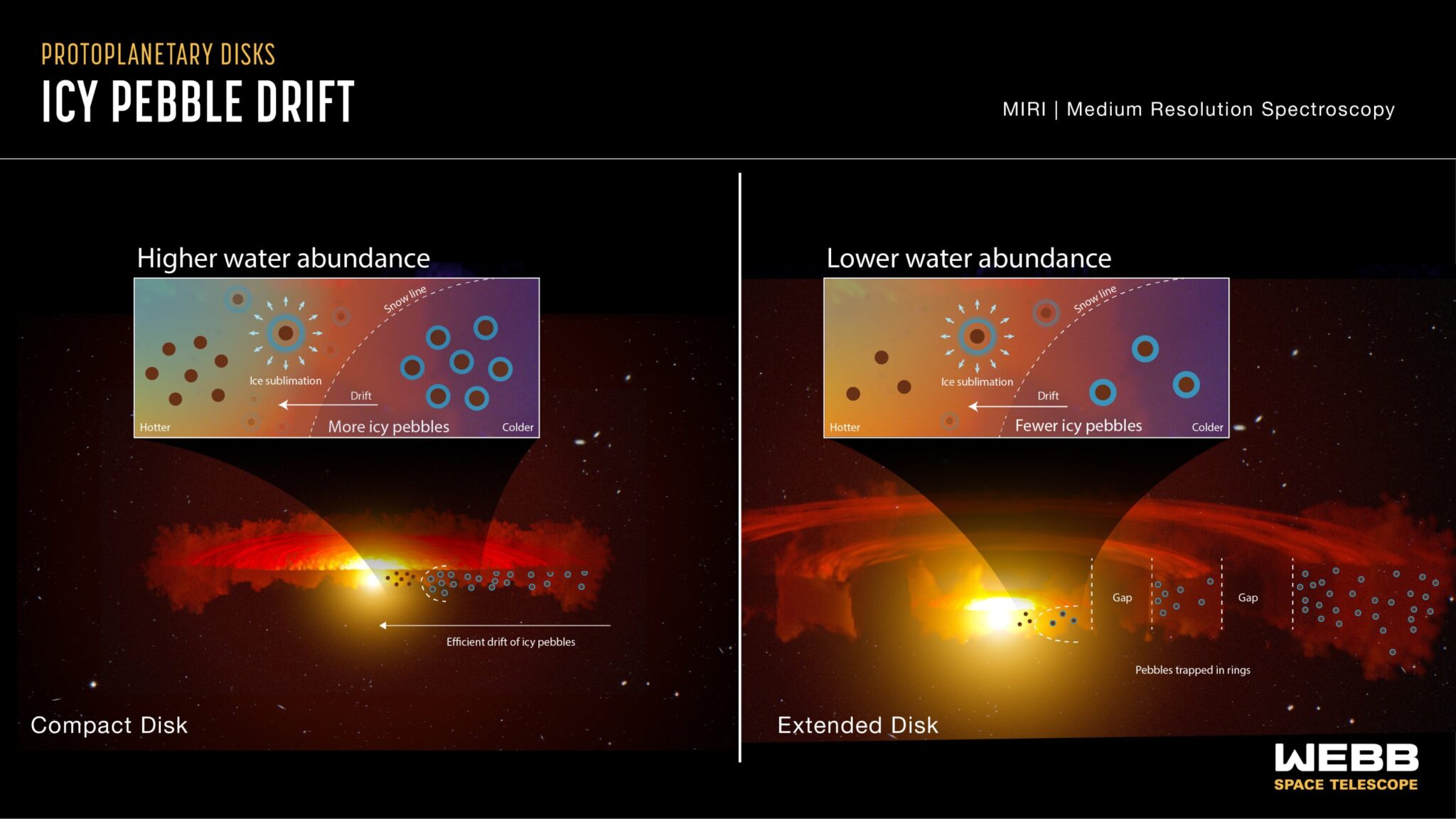Using the James Webb Space Telescope, scientists have made a sensational discovery concerning the process of planet formation. They found that water in protoplanetary disks played a key role in this process. The discovery confirms a previously existing model in which ice particles from distant outer regions drift into the inner rocky zone.

Earlier theories indicated that ice particles formed in the cold outer regions of protoplanetary disks were the main building blocks for the formation of planets. It was assumed that the pebbles drifted towards the star due to friction in the gas disk, delivering solid materials and water to the planets. The central aspect of these theories was that when the ice floes reached the area where the ice turned into a gaseous state (the so-called “snow line”), they should release a large amount of cold water vapor. This phenomenon was registered by James Webb.
Principal investigator Andrea Banzatti of Texas State University remarked: “Webb finally revealed the connection between water vapor in the inner disk and the drift of icy pebbles from the outer disk. In the past, we had this very static picture of planet formation, almost like there were these isolated zones that planets formed out of. Now we actually have evidence that these zones can interact with each other. This finding opens up exciting prospects for studying rocky planet formation with Webb.”
What James Webb saw with MIRI
The researchers used the MIRI (the Mid-Infrared Instrument) to study four protoplanetary disks surrounding sun-like stars. All these stars were between 2 and 3 million years old. The age is very small by the standards of the Universe.

The researchers hoped to determine whether there was more water in the inner, rocky part of compact discs compared to expanded discs. This would be logical if the drift of rocks is more efficient and delivers a lot of substance (with water included) to the inner planets. The team used a medium-resolution MIRI spectrometer for this, since it is sensitive to water vapor radiation.
The results confirmed expectations by detecting an excess of cold water in protoplanetary disks. Studies show that large planets can form rings of increased pressure where material for planet formation is collected. This is how Jupiter could have originated in our solar system: it prevented the delivery of water and rocks to the inner, relatively water-poor zone of rocky planets.
Solving a long-standing mystery
At first, the results of the study looked strange. They showed that in smaller, more compact disks, the water was colder, in larger ones, it was hotter. This was not clear since the selected stars had similar temperatures. But after combining data from both types, it became obvious that in compact disks, water is located at significantly smaller distances from the snow line — about ten times closer to the star than the orbit of Neptune.
The discovery helped clarify an important aspect of the formation of planets and allowed us to better understand the processes occurring in other planetary systems.
Earlier we reported on how James Webb tried to find a planet in the Fomalhaut system.
According to phys.org
Follow us on Twitter to get the most interesting space news in time
https://twitter.com/ust_magazine

